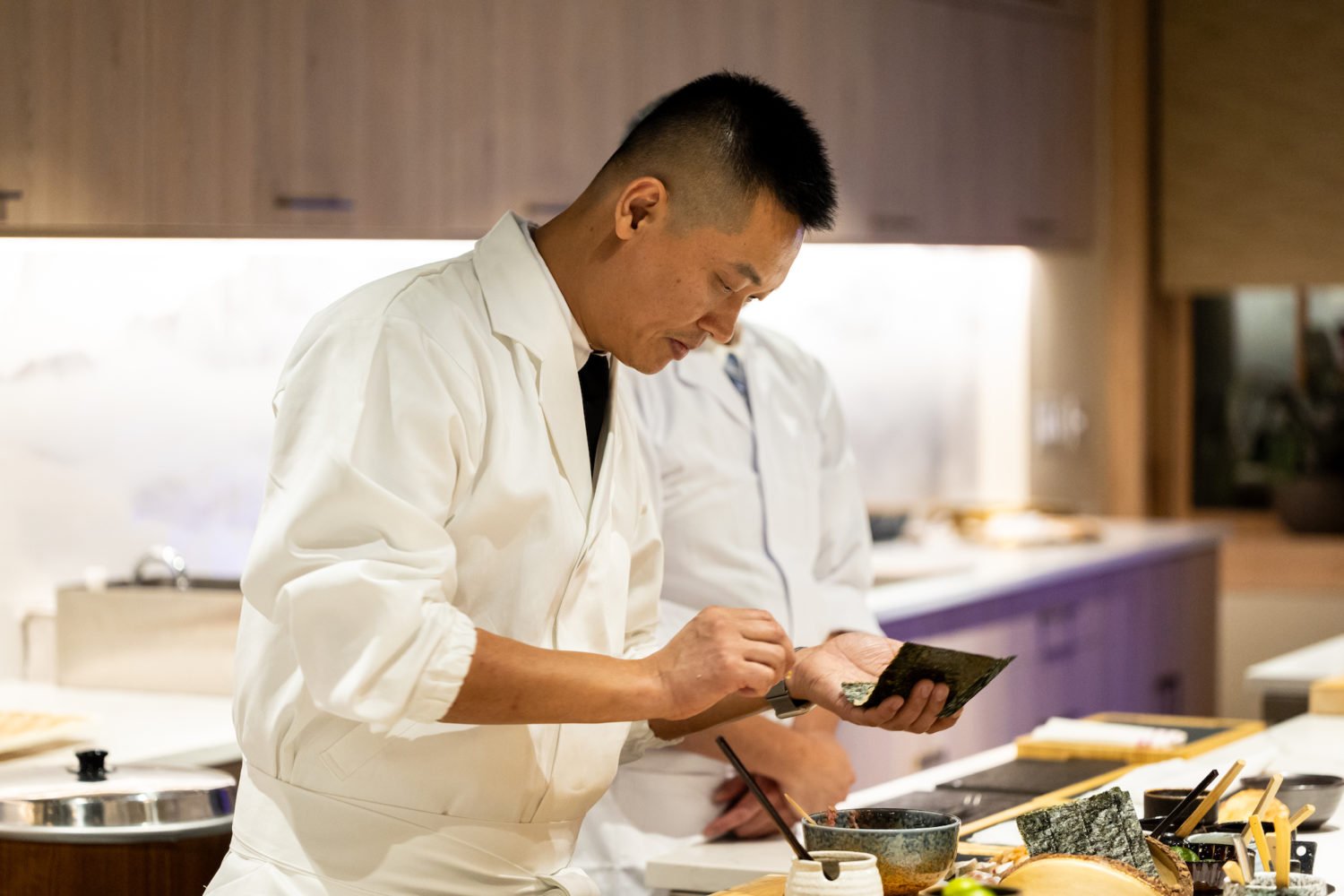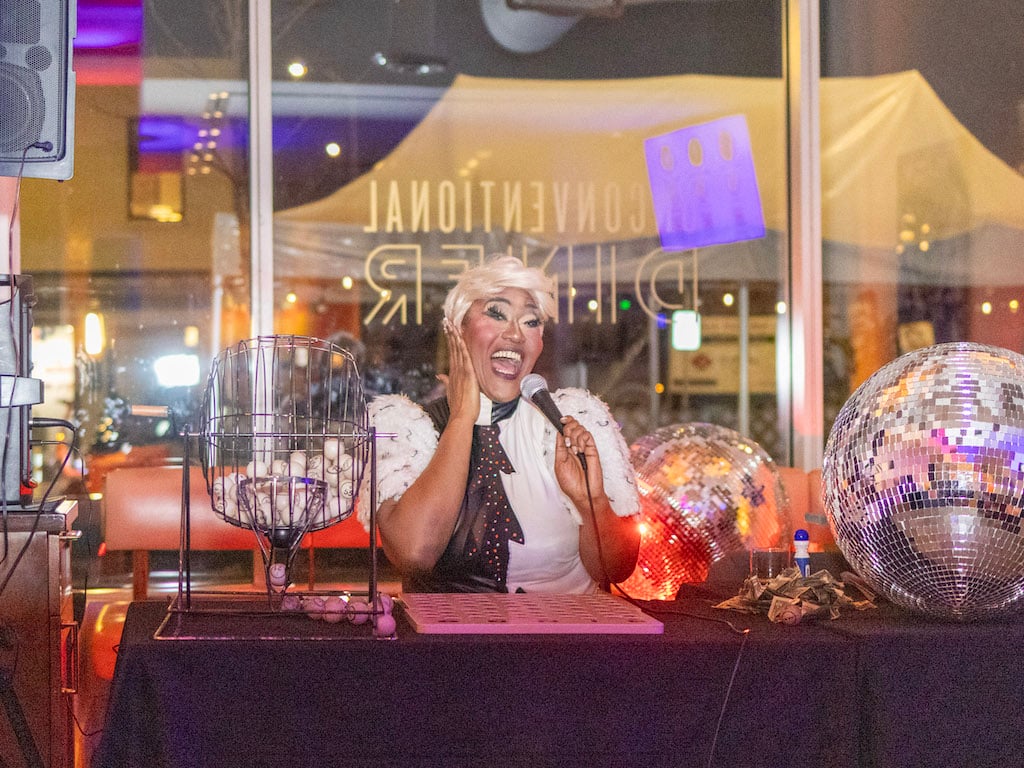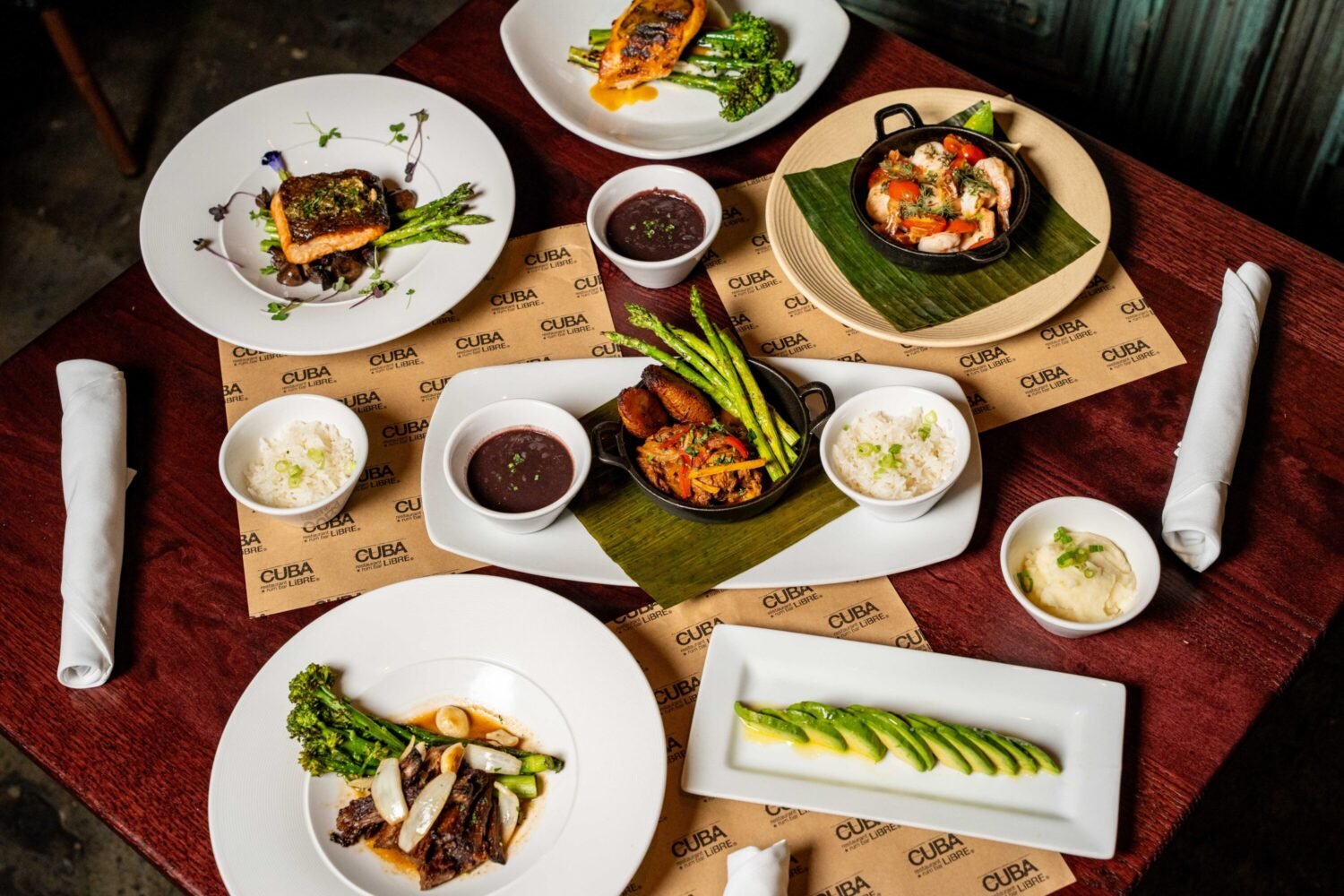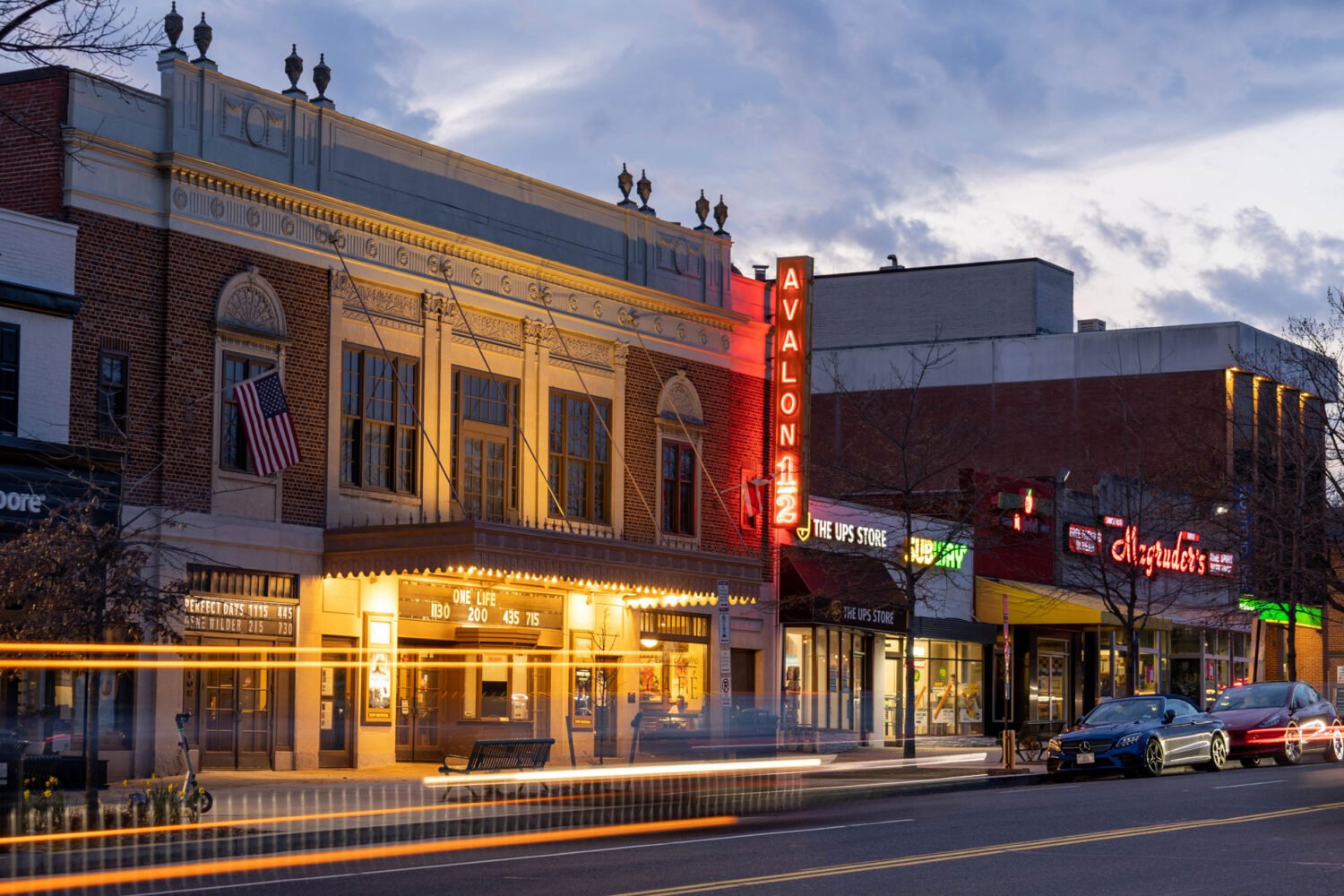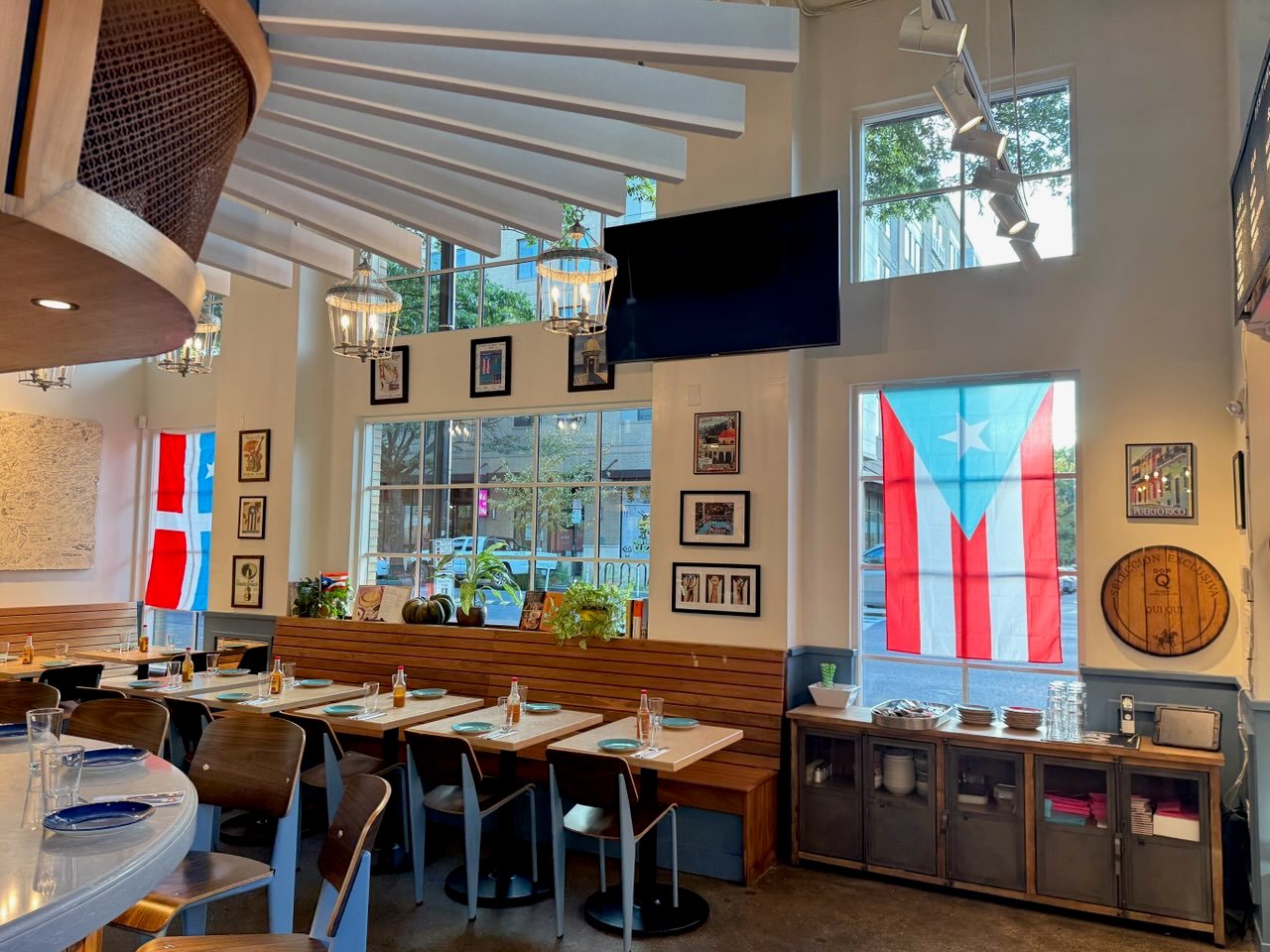Chef Piter Tjan (previously with his brother, Handry Tjan) creates a modern kappo tasting menu (including a vegan option) at Kōbō, inside Chevy Chase’s Sushiko. Here’s a look at what goes into the elaborate meal.
 Piter inspects the daily shipment of seafood, most of which comes from Tokyo's famous Tsukiji market.
Piter inspects the daily shipment of seafood, most of which comes from Tokyo's famous Tsukiji market. 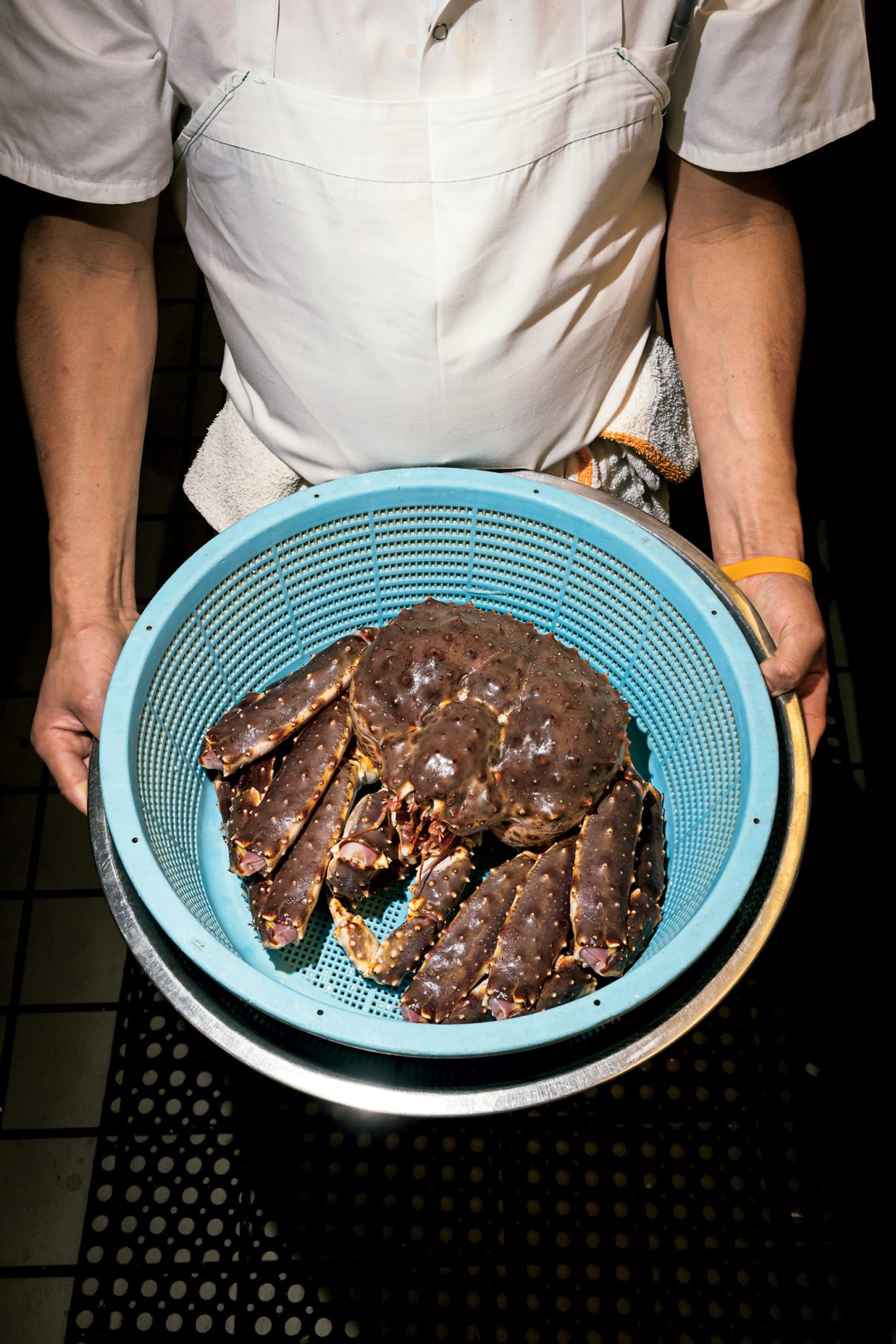 Hokkaido king crab, available in winter, is broken down for nigiri sushi and a dash-based soup with matsutake mushrooms.
Hokkaido king crab, available in winter, is broken down for nigiri sushi and a dash-based soup with matsutake mushrooms.Left: Piter inspects the daily shipment of seafood, most of which comes from Tokyo’s famous Tsukiji market.
Right: Hokkaido king crab, available in winter, is broken down for nigiri sushi and a dashi-based soup with matsutake mushrooms.
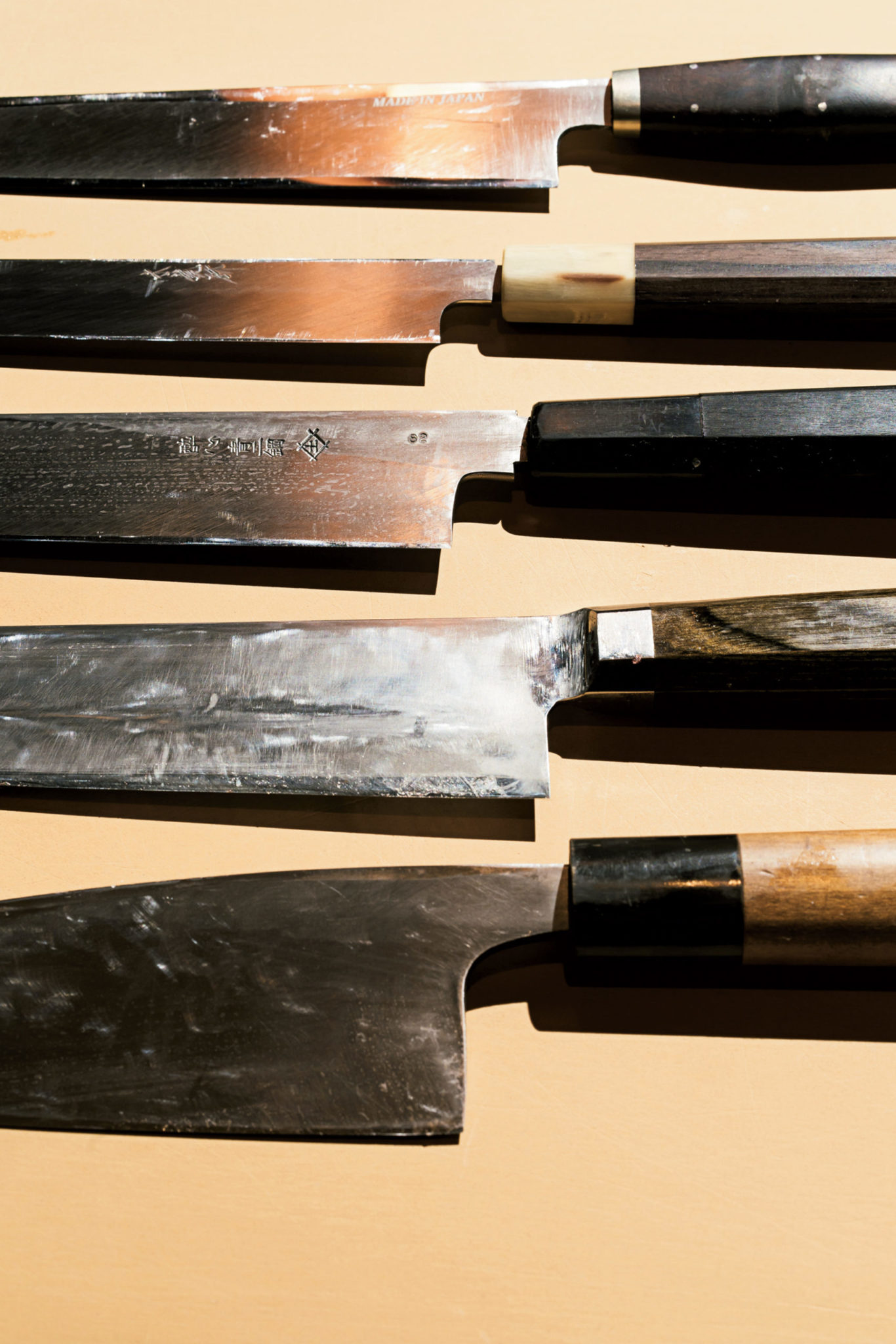 Piter has collected about 25 Japanese knives – his most expensive cost $3,000 – while Handry has at least 40.
Piter has collected about 25 Japanese knives – his most expensive cost $3,000 – while Handry has at least 40.  The brothers say some of the best bluefin tuna is farm-raised in Spain. And fresh isn't actually better – they dry-age the fish, like steak, for about ten days.
The brothers say some of the best bluefin tuna is farm-raised in Spain. And fresh isn't actually better – they dry-age the fish, like steak, for about ten days. Left: Piter has collected about 25 Japanese knives—his most expensive cost $3,000—while Handry has at least 40.
Right: The brothers say some of the best bluefin tuna is farm-raised in Spain. And fresh isn’t actually better—they dry-age the fish, like steak, for about ten days.
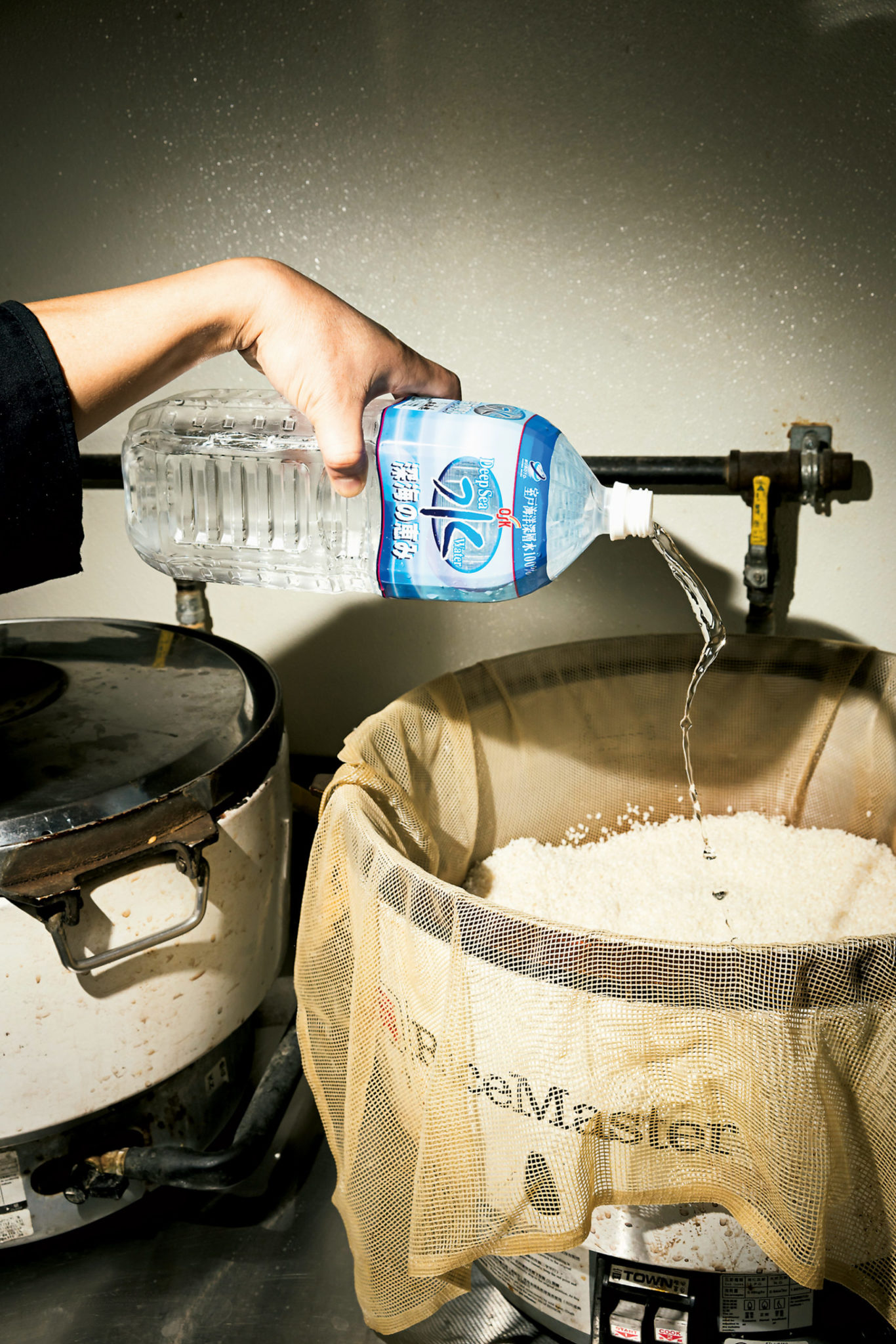 Kobo imports 1,200 bottles of deep-sea water from Japan every three months. The chefs say the neutral, softer water makes the rice—like New York bagels—better.
Kobo imports 1,200 bottles of deep-sea water from Japan every three months. The chefs say the neutral, softer water makes the rice—like New York bagels—better. Rice takes on a dark color thanks to red vinegar aged three to six years from sake lees (sediment). Kobo is the only area restaurant that uses the prized product.
Rice takes on a dark color thanks to red vinegar aged three to six years from sake lees (sediment). Kobo is the only area restaurant that uses the prized product.Left: Kobo imports 1,200 bottles of deep-sea water from Japan every three months. The chefs say the neutral, softer water makes the rice—like New York bagels—better.
Right: Rice takes on a dark color thanks to red vinegar aged three to six years from sake lees (sediment). Kobo is the only area restaurant that uses the prized product.
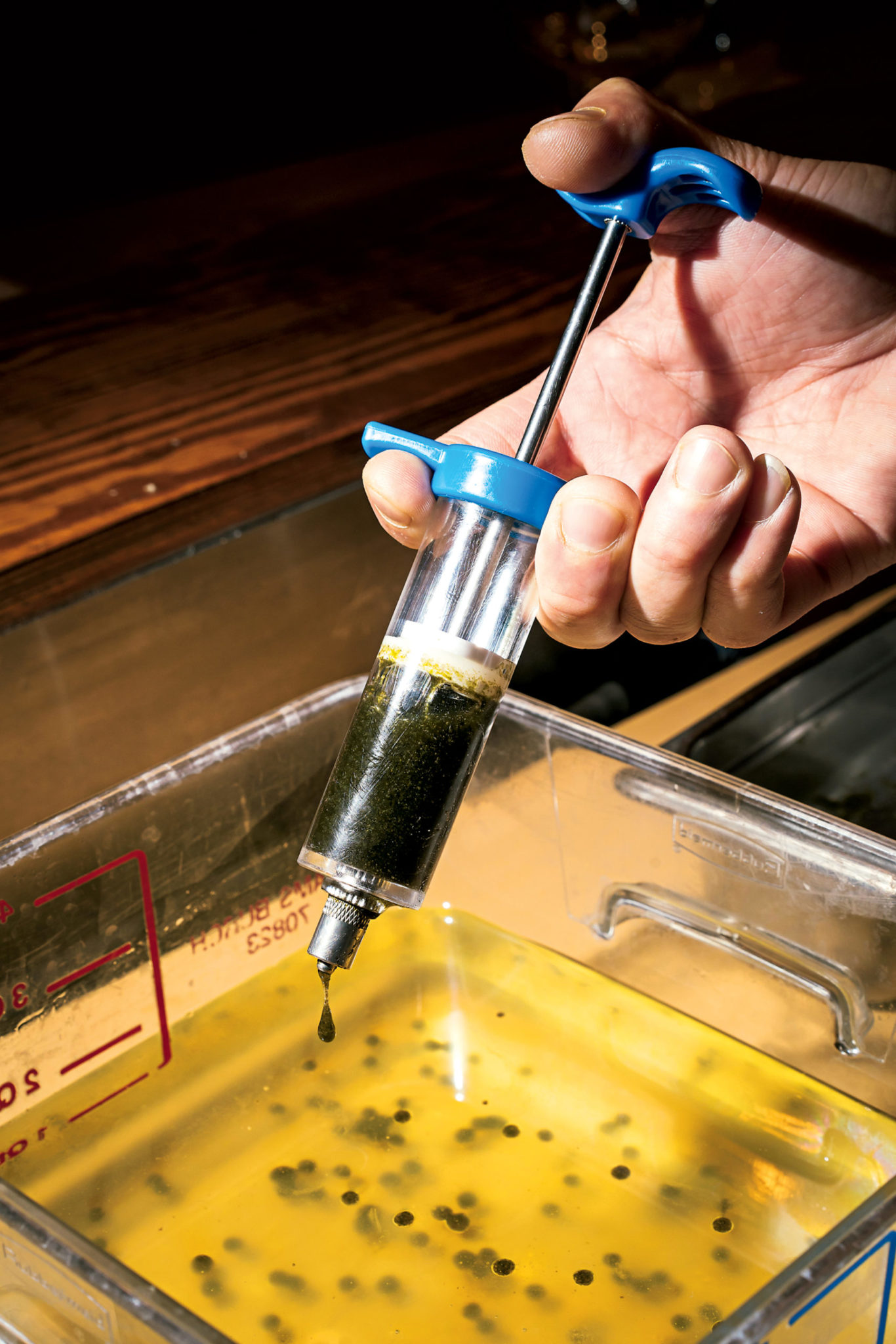 “Caviar” is made from seaweed, deep-sea water, and agar-agar dripped into cold oil. It’s served in a tin with a layer of from-scratch tofu.
“Caviar” is made from seaweed, deep-sea water, and agar-agar dripped into cold oil. It’s served in a tin with a layer of from-scratch tofu. 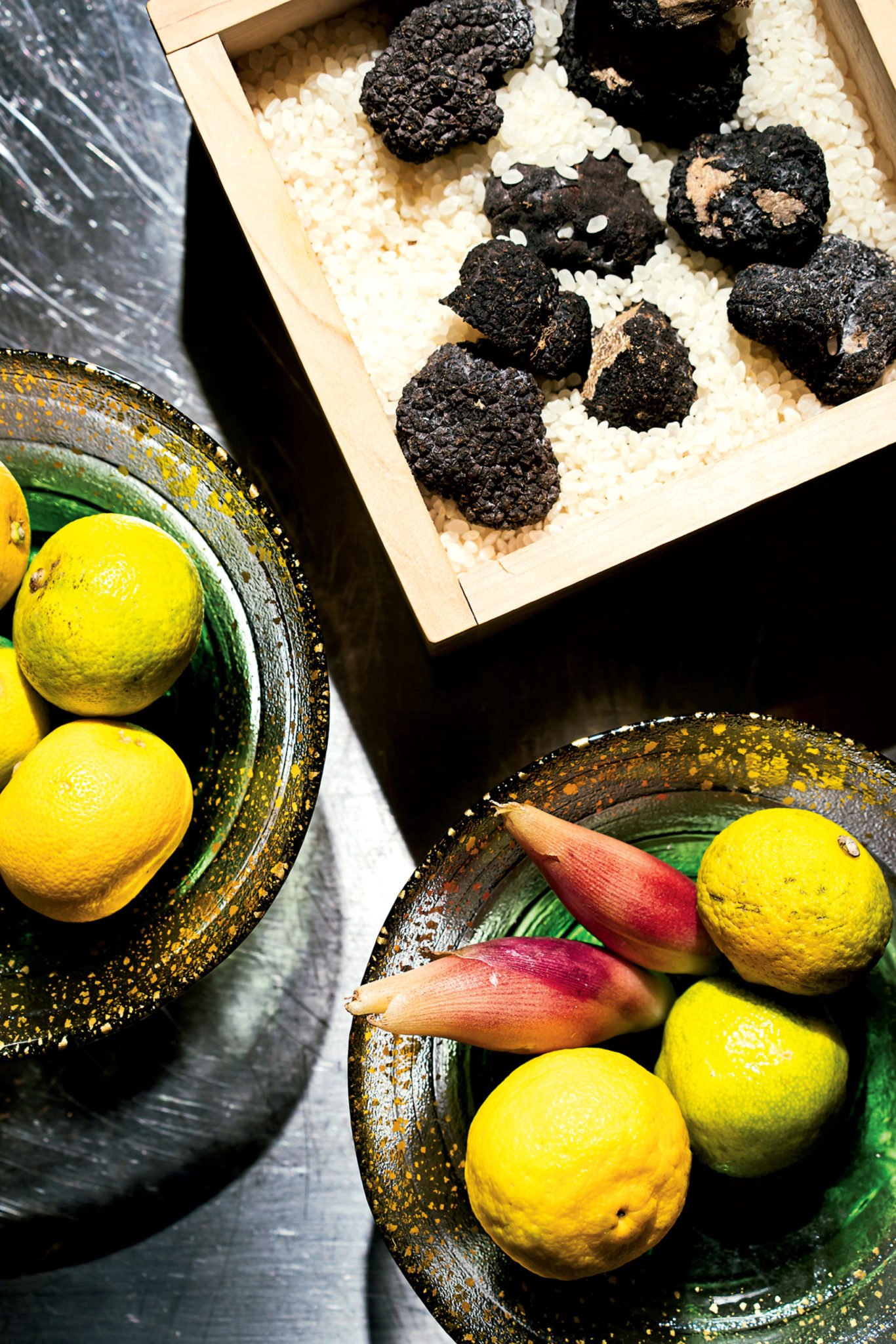 The Tjan brothers love to mix Eastern and Western flavors. They use yuzu, lime-like sudachi, and ginger blossoms from Japan alongside Burgundy black truffles.
The Tjan brothers love to mix Eastern and Western flavors. They use yuzu, lime-like sudachi, and ginger blossoms from Japan alongside Burgundy black truffles. Left: “Caviar” is made from seaweed, deep-sea water, and agar-agar dripped into cold oil. It’s served in a tin with a layer of from-scratch tofu.
Right: The Tjan brothers love to mix Eastern and Western flavors. They use yuzu, lime-like sudachi, and ginger blossoms from Japan alongside Burgundy black truffles.
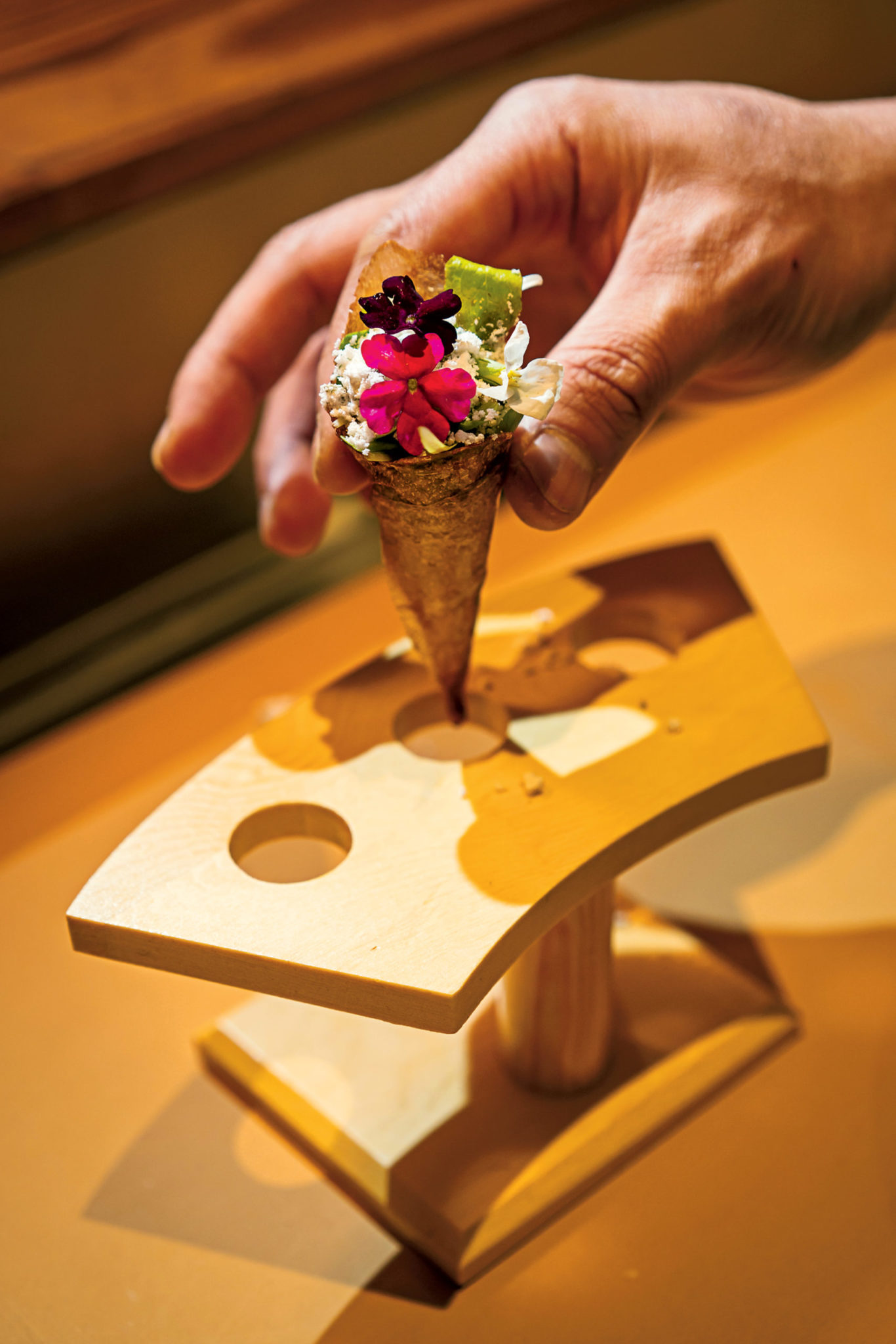 It takes a day to make delicate cones of potato starch, soy, and yuzu, which are used instead of nori for hand rolls stuffed with baby lettuce, orange powder, and edible flowers.
It takes a day to make delicate cones of potato starch, soy, and yuzu, which are used instead of nori for hand rolls stuffed with baby lettuce, orange powder, and edible flowers. Piter shaves truffle over a risotto-like congee, slow-cooked for hours with dashi.
Piter shaves truffle over a risotto-like congee, slow-cooked for hours with dashi. Left: It takes a day to make delicate cones of potato starch, soy, and yuzu, which are used instead of nori for hand rolls stuffed with baby lettuce, orange powder, and edible flowers.
Right: Piter shaves truffle over a risotto-like congee, slow-cooked for hours with dashi.
 A terrarium salad consists of a seaweed and sunflower “soil,” black-edamame purée, and baby turnips and carrots.
A terrarium salad consists of a seaweed and sunflower “soil,” black-edamame purée, and baby turnips and carrots.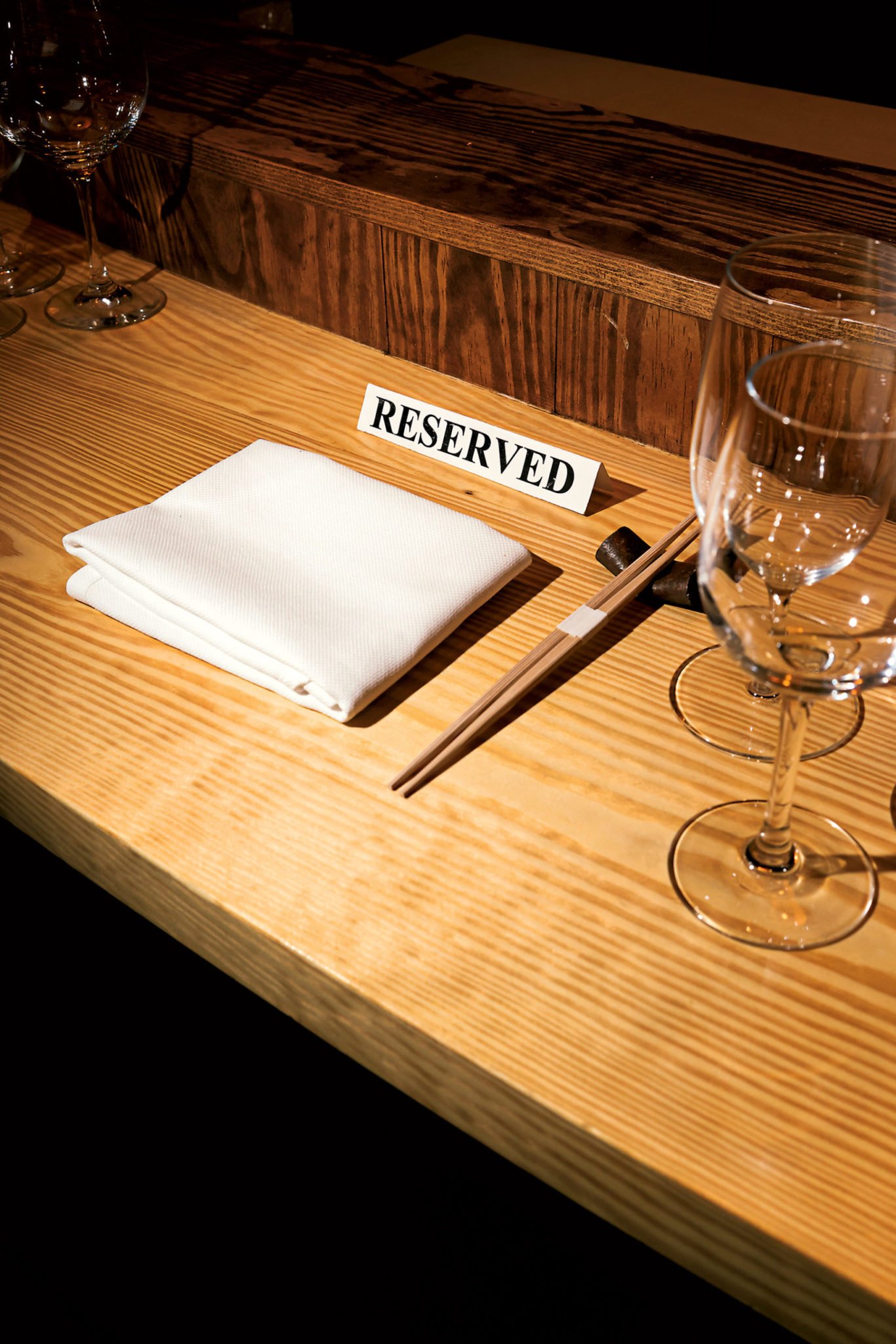 Snag one of eight seats through the online reservation system. Guests prepay for 12 to 15 courses—$130 for vegan, $160 for regular—as they would for theater tickets.
Snag one of eight seats through the online reservation system. Guests prepay for 12 to 15 courses—$130 for vegan, $160 for regular—as they would for theater tickets.Left: A terrarium salad consists of a seaweed and sunflower “soil,” black-edamame purée, and baby turnips and carrots.
Right: Snag one of eight seats through the online reservation system. Guests prepay for 12 to 15 courses—$130 for vegan, $160 for regular—as they would for theater tickets.
This article appears in the February 2018 issue of Washingtonian.


